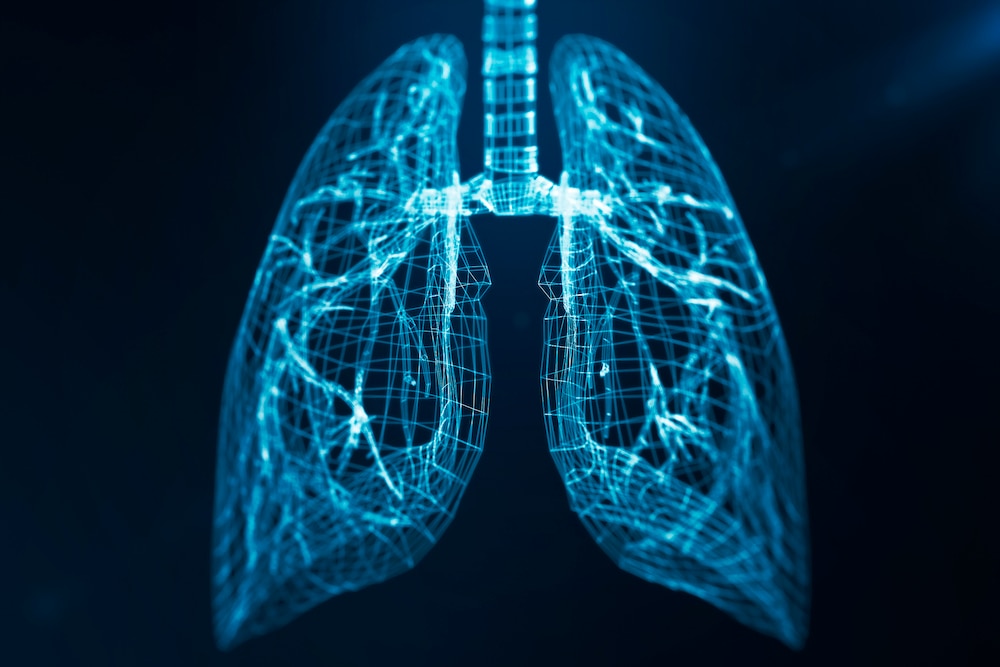Create a free profile to get unlimited access to exclusive videos, sweepstakes, and more!
We thought we knew ourselves…but there’s something new in the human body
You didn't know you had this in your body.

If you've ever taken Anatomy 101 — with or without a human skeleton dangling eerily in one corner of the room — then you should know everything that exists in the human body and where it is, right? Wrong.
Something was hiding inside our bodies until now. Though not immediately obvious, like an extra stomach would be, but rather invisible to the naked eye, cells that were never before known to exist in our lungs surfaced on a petri dish when researchers were getting a closeup of human lung tissue. Now known as respiratory airway secretory (RAS) cells, they are actually not that different from stem cells. They can even rebuild damaged lung tissue like stem cells can.
RAS cells had gone unnoticed before because they hang out in the bronchioles, which branch off from the bronchi (the main tubes which send air to your lungs when you breathe)and lead to tiny air sacs, or alveoli. Researcher Edward Morrisey of the University of Pennsylvania, who led a study recently published in Nature, was amazed at what those lung tissue samples revealed.
“Our analysis revealed that RAS cells have a very different gene expression signature,” he told SYFY WIRE. “When we looked at where they are located, in a compartment of the human lung called respiratory bronchioles, which doesn’t exist in mice, we knew these cells were unique.”
These cells secrete molecules that keep the fragile bronchioles from collapsing so you can get the most out of every breath. What is really amazing about them is that they are involved in creating another type of cell that can repair damaged alveolar tissue. This is how RAS cells are similar to (though not exactly the same as) pluripotent stem cells. Both have the potential to morph into different types of tissue, though RAS cells function as progenitor cells, early stem cell descendants that can turn into different types of tissues but cannot infinitely self-replicate.
RAS cells are progenitors of alveolar type 2 or AT2 cells, which make up special alveoli which can secrete a chemical that goes into repairing other alveoli that have suffered damage. Morrisey calls them “facultative progenitors” because they are not only the predecessors to AT2 cells, but also have their own function in lung tissue and are able to do double duty. They can assist other cells but can still function on their own. By refreshing the bronchioles with molecules that keep them strong, RAS cells also have their own way to keep lungs going.
“RAS cells generate AT2 cells, which are the key cell type that repair alveoli, where gas exchange occurs,” said Morrisey. “The process by which RAS cells become AT2 cells is not well understood yet, but we did identify pathways that allow them to expand or form AT2 cells.”
Those pathways are signaling pathways known as Notch and Wnt. Signaling pathways are chemical reaction series which control a cell function. Notch releases a substance that regulates DNA transcription, during which all the information in that DNA is copied into a messenger RNA (mRNA) molecule. After the mRNA leaves a cell’s nucleus, it is in charge of synthesizing a protein that it then pastes the copied DNA sequence into. The Wnt pathway regulates many different cell functions, including creation of organs, as an embryo develops.
In the future, RAS cells may be used to treat and even possibly reverse diseases that affect the lungs, such as COPD (chronic obstructive pulmonary disease), for which there is no cure yet. It is also the third leading cause of death on the planet. Unfortunately, not much is known about the exact types of cells that factor into COPD, and smoking is far from the only cause. Many people inherit the tendency to develop it. Morrisey believes that his research could demystify more about this illness at the cellular level and lead to new therapies, possibly even a cure.
“More work needs to be done to determine how RAS cells communicate with their neighboring cells and how this communication allows them to function in the distal airways of the lung and act as progenitors to help repair damaged alveoli,” he said.
Maybe the emergence of something we never knew existed in our bodies will help us all breathe easier.


























